How does nitrogen enter our water?
Nitrates in drinking water and streams come primarily from farmland and fertilized lawns, but can also come from failing septic systems, animal feedlots, wastewater treatment plants, and animal manure storage areas.
What are nitrogen’s health effects?
Infants younger than six months and elderly people who drink water with nitrate levels higher than the maximum contaminant level set by the U.S. Environmental Protection Agency can become seriously ill and, if untreated, may die. Symptoms include shortness of breath and blue baby syndrome.

Urban
 Fertilize only if needed.
Fertilize only if needed.Test soil before adding fertilizer. Does it need it? Cut grass fairly often to keep it at 3-4” and let clippings fall. This keeps soil moist, grass green, and minimizes nitrogen runoff.
 Plant native plants.
Plant native plants.Add interest to your yard, prevent weeds, create habitat for native species and spend less time doing yard work. Native plants absorb water and nutrients, balance soil and prevent runoff.
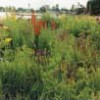 Grow shoreline buffers.
Grow shoreline buffers.A buffer strip of dense, native vegetation is the best option for waterfront landscaping. It soaks up water, prevents nitrogen runoff and reduces damage from heavy rains and floods.
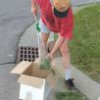 Keep grass out of streets.
Keep grass out of streets.Yard waste in streets eventually ends up in the storm sewer and a local river. It brings nitrogen with it and clouds water, reduces stream depth and damages fish habitat.
 Build raingardens.
Build raingardens.Rain gardens capture water from downspouts, roofs, streets, parking lots, sidewalks and driveways before it can carry fertilizer, oil, pet waste or other contaminants to streams.
Rural
 Apply fertilizer precisely.
Apply fertilizer precisely.Sample soil every three to six years, according to University of Minnesota recommendations. Apply just enough, only where needed. Split application.
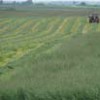 Rotate crops for continuous cover.
Rotate crops for continuous cover.A mixture of summer row crops and winter annual crops in rotation keeps fields covered and reduces soil and nutrient loss.
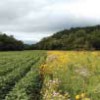 Plant grass buffers.
Plant grass buffers.Buffers absorb excess nutrients, enhance soil and slow runoff. Maintain them in critical areas.
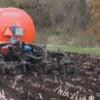 Manage manure.
Manage manure.Collect, store and apply at cool temperatures and appropriate rates. Apply to fields after testing and avoid spreading, if possible, when the ground is frozen or saturated.
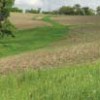 Use structures to slow runoff.
Use structures to slow runoff.Well-placed ponds, terraces, grass waterways, grade stabilization structures, and buffer strips slow flow to streams and filter some nutrients.

